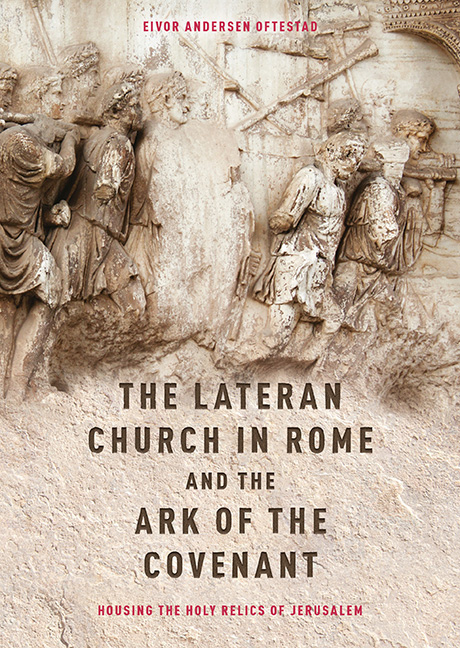 The Lateran Church in Rome and the Ark of the Covenant: Housing the Holy Relics of Jerusalem
The Lateran Church in Rome and the Ark of the Covenant: Housing the Holy Relics of Jerusalem Published online by Cambridge University Press: 31 August 2019
First the scribe cleanses the parchment of fat and coarse dirt with a knife. Then he removes the hairs and fibres with a pumice stone. If he did not do this, the written letters would be worthless and impermanent. Then he rules the parchment, so that the writing will be regular. All this you must do with your hearts.
The Descriptio
The presentation of the Descriptio in this chapter, as well as the edition in Appendix 3, is based on the text in manuscript Reg. lat. 712. This manuscript belongs to the French manuscripts in group III, which all present an early, consistent version of the Descriptio. Choosing this group as the basis for the presentation of the text is both a pragmatic and an intentional choice. It is pragmatic because several versions of the text exist. It is not certain which is the oldest version, and both the oldest versions – in groups II and III – have survived only in northern France and Belgium, with no extant copy in Rome. I have chosen to present the version according to group III, and not group II, because the Descriptio according to the manuscripts in group II appears more like an abridged version. In the Lateran archive, however, it is difficult to define any certain text at all, since all the versions emerge as variations of different elements. In addition to the fact that the oldest version in ACL A 70 is partly illegible, all the versions of the archive are composed differently. In other words, there is no fixed text of the Descriptio in the archive. The version edited as John the Deacon's version by Valentini and Zuchetti is a reconstruction which does not exist.
One explanation for the difference between the versions transmitted in northern France and Belgium, and those in the Lateran archive, may be that, when the promotion of the cathedral was transmitted to a context other than the archive, it resulted in a fixed text that was copied repeatedly in the related monasteries. When we compare this version with the oldest version currently preserved at the Lateran archive, it is easy to see that the presentation of the cathedral was not static, but that arguments were relocated or inserted in the text as needed.
To save this book to your Kindle, first ensure [email protected] is added to your Approved Personal Document E-mail List under your Personal Document Settings on the Manage Your Content and Devices page of your Amazon account. Then enter the ‘name’ part of your Kindle email address below. Find out more about saving to your Kindle.
Note you can select to save to either the @free.kindle.com or @kindle.com variations. ‘@free.kindle.com’ emails are free but can only be saved to your device when it is connected to wi-fi. ‘@kindle.com’ emails can be delivered even when you are not connected to wi-fi, but note that service fees apply.
Find out more about the Kindle Personal Document Service.
To save content items to your account, please confirm that you agree to abide by our usage policies. If this is the first time you use this feature, you will be asked to authorise Cambridge Core to connect with your account. Find out more about saving content to Dropbox.
To save content items to your account, please confirm that you agree to abide by our usage policies. If this is the first time you use this feature, you will be asked to authorise Cambridge Core to connect with your account. Find out more about saving content to Google Drive.